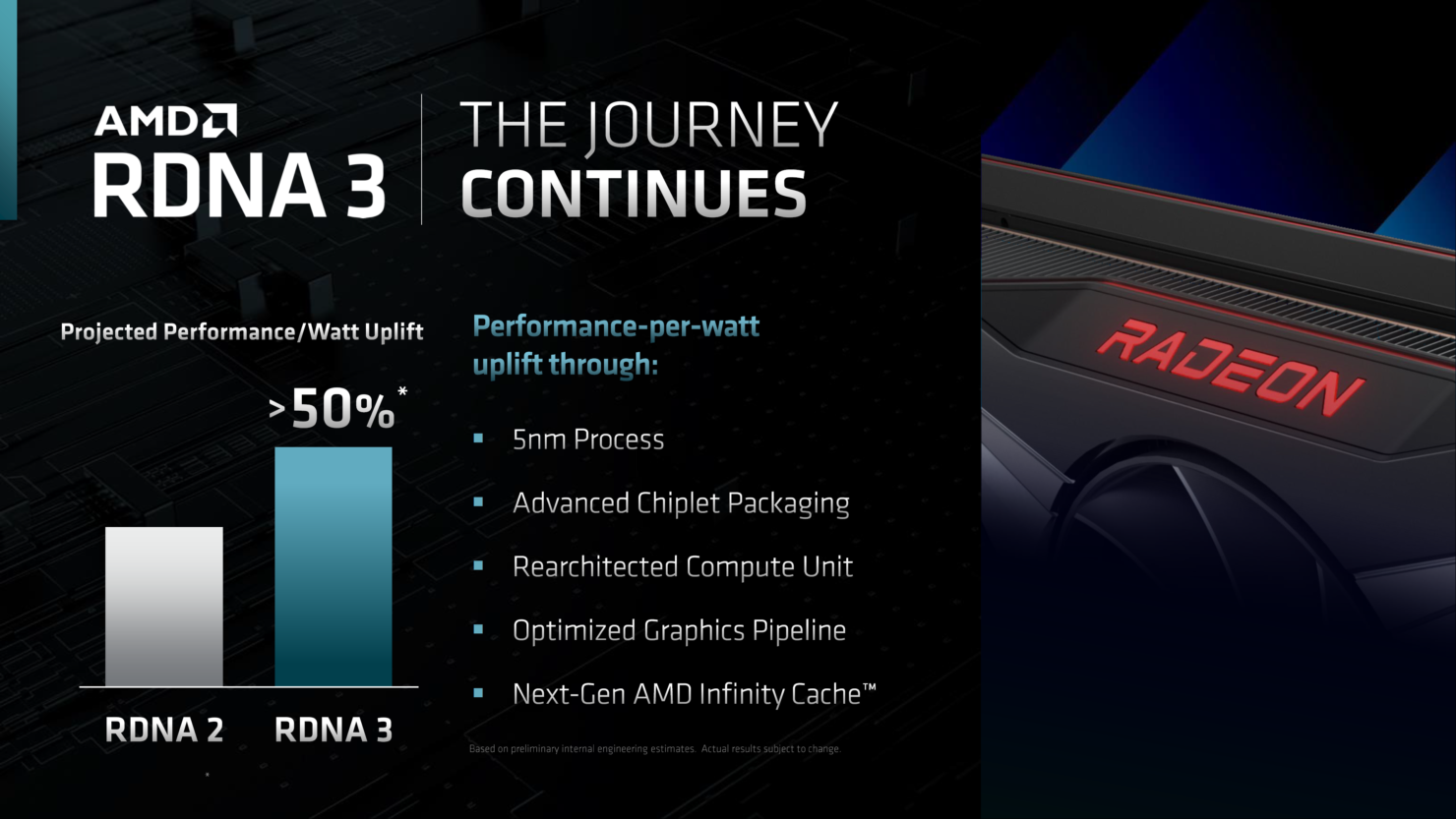RDNA 3
To recap, the RDNA3 microarchitecture features 3 GPUs namely:
Navi 31Navi 32Navi 33
We have the full specifications for all these chips available here. Navi31 and Navi32 will feature a MCM (Multi Chip Module) design whereas Navi 33 makes use of the good old monolithic design. AMD is redesigning the CUs (Compute Units) to deliver enhanced RT (Ray Tracing) performance. To add onto that, these GPUs promise a 50% Performance/Watt leap as compared to last-Gen.
Cache Values
Moving on to the actual topic, Kepler on Twitter compiled all the cache values. The RDNA3 architecture powered Navi 31, Navi 32 will ship with twice the Vector Cache per CU (Compute Unit) as compared to RDNA2. Similarly, the new GPUs are powered by 256KB of Graphics L1 Data Cache per SA (Shader Array) which is a whopping 2x more than last-Gen. The same pattern follows for the Navi 33 and the Phoenix (APU) lineup which make use of a monolithic design in contrast to Navi 31, 32. The only difference lies in the Register File per SIMD (Single instruction, multiple data) where N33 and Phoenix feature a cut down 128KB of Vector Register (per SIMD) memory.
Additional Changes
Coelacanth-dream gave us some more information regarding these new GPUs from team red. Reportedly, all Navi3X GPUs feature support for VODP (Dual-Issue Wave32) instructions, WMMA (Wave Matrix Multiply-Accumulate). In addition, the performance per each WGP (Work Group Processor) has increased significantly.
Release Date
Team red teased its Navi3X GPUs during its Ryzen 7000 reveal and gave us an expected release date of ‘Sometime this year’. We expect these GPUs to arrive side by side with NVIDIA’s Lovelace. Which giant do you think will take the crown this year? Tell us in the comments.

